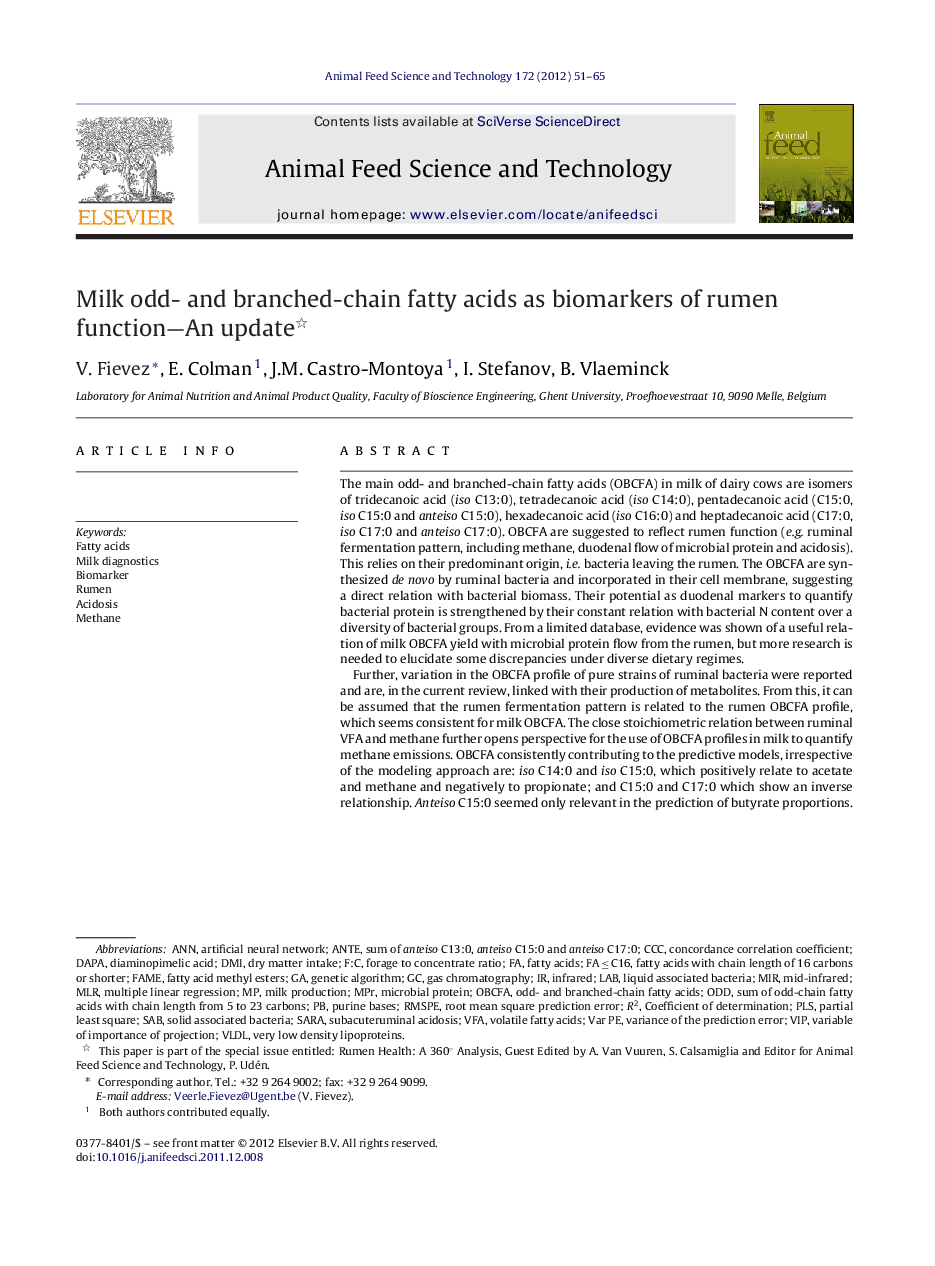| کد مقاله | کد نشریه | سال انتشار | مقاله انگلیسی | نسخه تمام متن |
|---|---|---|---|---|
| 2419909 | 1552422 | 2012 | 15 صفحه PDF | دانلود رایگان |

The main odd- and branched-chain fatty acids (OBCFA) in milk of dairy cows are isomers of tridecanoic acid (iso C13:0), tetradecanoic acid (iso C14:0), pentadecanoic acid (C15:0, iso C15:0 and anteiso C15:0), hexadecanoic acid (iso C16:0) and heptadecanoic acid (C17:0, iso C17:0 and anteiso C17:0). OBCFA are suggested to reflect rumen function (e.g. ruminal fermentation pattern, including methane, duodenal flow of microbial protein and acidosis). This relies on their predominant origin, i.e. bacteria leaving the rumen. The OBCFA are synthesized de novo by ruminal bacteria and incorporated in their cell membrane, suggesting a direct relation with bacterial biomass. Their potential as duodenal markers to quantify bacterial protein is strengthened by their constant relation with bacterial N content over a diversity of bacterial groups. From a limited database, evidence was shown of a useful relation of milk OBCFA yield with microbial protein flow from the rumen, but more research is needed to elucidate some discrepancies under diverse dietary regimes.Further, variation in the OBCFA profile of pure strains of ruminal bacteria were reported and are, in the current review, linked with their production of metabolites. From this, it can be assumed that the rumen fermentation pattern is related to the rumen OBCFA profile, which seems consistent for milk OBCFA. The close stoichiometric relation between ruminal VFA and methane further opens perspective for the use of OBCFA profiles in milk to quantify methane emissions. OBCFA consistently contributing to the predictive models, irrespective of the modeling approach are: iso C14:0 and iso C15:0, which positively relate to acetate and methane and negatively to propionate; and C15:0 and C17:0 which show an inverse relationship. Anteiso C15:0 seemed only relevant in the prediction of butyrate proportions.As changes in the ruminal microbial population (e.g. increased dominance of Streptococcus bovis) sometimes initiate a chain of events that eventually might lead to (sub-acute) ruminal acidosis, OBCFA in milk fat are targeted as candidates for the early detection of ruminal acidosis. Increasing C17:0 + C17:1 cis-9 and decreasing iso C14:0 concentration show potential as indicators of sub-acute acidosis or were obvious before clinical symptoms of acute acidosis occurred. Collection of more experimental data is currently on-going for the development of more robust models to classify rumen health in continuous probability classes rather than discrete acidotic vs. non-acidotic cases.
Journal: Animal Feed Science and Technology - Volume 172, Issues 1–2, 28 February 2012, Pages 51–65